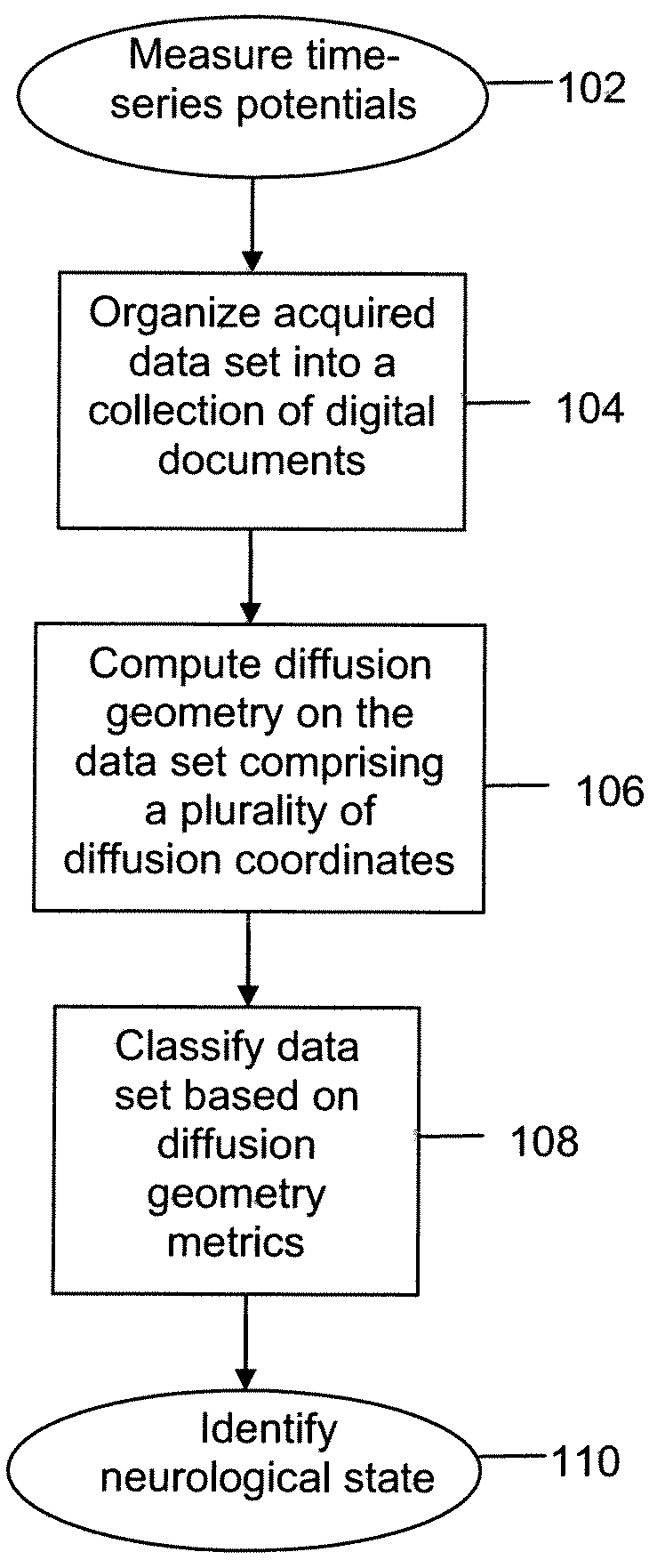Method and Apparatus For Assessing Brain Function Using Diffusion Geometric Analysis
a geometric analysis and brain function technology, applied in the field of neuronal evaluation using brain electrical activity, can solve the problems of not being practicable to compute or use diffusion distances of high-dimensional data, and certain standard notions of similarity or nearness are not very useful inference tools, so as to achieve simple and robust quantity, the effect of microscopic similarity relations
- Summary
- Abstract
- Description
- Claims
- Application Information
AI Technical Summary
Benefits of technology
Problems solved by technology
Method used
Image
Examples
Embodiment Construction
[0031]Reference will now be made in detail to the present embodiments (exemplary embodiments) of the invention, examples of which are illustrated in the accompanying drawings. Wherever possible, the same reference numbers will be used throughout the drawings to refer to the same or like parts.
[0032]Using Bx™ technology, collected normative data has been used to establish quantitative features of brain electrical activity which clearly distinguish normal brain function from abnormal dysfunctional conditions. This normative data has been shown to be independent of racial background and to have extremely high test-retest reliability, specificity (low false positive rate) and sensitivity (low false negative rate). Conducted studies of 15,000 normal and pathological evaluations have demonstrated that brain electrical signals are highly sensitive to changes in normal brain function, and change their characteristics instantaneously after catastrophic events such as concussive (blast) or tr...
PUM
 Login to View More
Login to View More Abstract
Description
Claims
Application Information
 Login to View More
Login to View More - R&D
- Intellectual Property
- Life Sciences
- Materials
- Tech Scout
- Unparalleled Data Quality
- Higher Quality Content
- 60% Fewer Hallucinations
Browse by: Latest US Patents, China's latest patents, Technical Efficacy Thesaurus, Application Domain, Technology Topic, Popular Technical Reports.
© 2025 PatSnap. All rights reserved.Legal|Privacy policy|Modern Slavery Act Transparency Statement|Sitemap|About US| Contact US: help@patsnap.com



